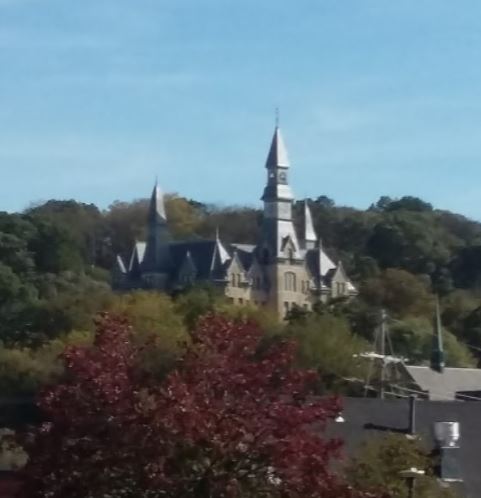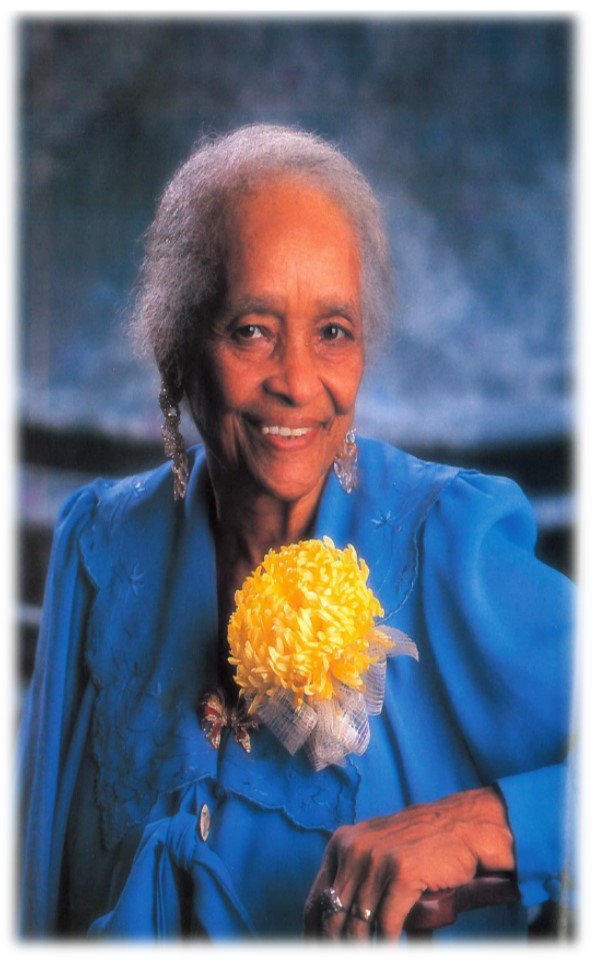The History of The Banneker School
About the School
The history of such a small structure could not be bigger than its physical form. Construction for the original Banneker School commenced in 1885. Prior to that time, post-Civil War African American children in the Parkville area were educated in the basement of Parkville’s Missouri Valley Hotel, then in Park College’s Bergen Hall. It was determined that the scholars needed their own facility and land previously purchased by Park College was allocated for the construction of a one-room school for the specific purpose of educating African American children. Students at Park College (now Park University) created the bricks in the College kilns.

Class is in session
It is uncertain when the structure was completed. Documentation exists touting the graduating class of 1898 which could possibly be the first graduating class. The small building quickly outgrew the needs of the many students it sought to serve. In 1898, Banneker School teacher E.A. Robinson noted at a graduation ceremony for students through grade six that there were 50 scholars currently enrolled. By October 1889, classes through grade ten were taught with an enrollment of 58 students. By February of 1899, enrollment had reached 69. Given the size of the original Banneker School, it is hard to imagine many students occupying it. It is documented that in 1902 bids were sought for the construction of a new, larger educational facility. It is uncertain when the original Banneker School ceased to operate, but it is believed to be circa 1905.

Through the years
The school was named for Benjamin Banneker (1731-1806), an African American who sought after knowledge in many areas, as well as fought for the freedom of his race. He was an extremely intelligent individual, most notably teaching himself about astronomy and producing several publications on the subject. After the closure of the original school, the building was turned into a residence and remained a residence for many years. Modifications to the school included the addition of a kitchen on the south side, construction of a bathroom inside, addition of a fireplace and chimney on the west, modification to the fenestration on the west for new window openings, addition of a new entrance on the east, adding electrical, central heating, and other miscellaneous walls inside.

A New Beginning
In the 1980’s, Mrs. Lucille S. Douglass, who taught at the subsequent Banneker School in the 1940’s, discovered that a developer had purchased the original Banneker school and planned to demolish the structure. It was her foresight and leadership that have led us to this critical juncture of its restoration. She was able to purchase the property from the developer and deeded the property to the Platte County Historical Society.

Insight into the past
For such a small building with such a large, important function at a historic time in our Country’s history, the structure still provides us with an education that is worth learning. A building such as Banneker School provides us with an important insight into our past and is well worth all efforts to save it.
The building was listed on the National Register of Historic Places in 1995 for its significance of Ethnic Heritage – Black Education. In 2008, it was listed on Missouri’s Most Endangered Historic Places because of its significant deterioration.

See the Progress
About the Foundation
After Mrs. Lucille S. Douglass deeded the property to the Platte Country Historical Society, it was later determined that a separate non-profit needed to be established to carry on the task of restoring the school. Formed in 2008, the Banneker School Foundation and Historic Site, Parkville, Missouri (Banneker Foundation) was established to carry on the mission of Mrs. Douglass. The property was deeded to the Banneker Foundation.
Prior to the Banneker Foundation formation, under the Platte County Historical Society, grassroots efforts were implemented from raffles to picnics. The most successful was the donation of one million pennies from the students at Union Chapel Elementary School, raising $10,000 for the restoration project.
The mission of the Banneker Foundation is to restore the building to its original condition, in as much as it is practical to do so. It is the intent to keep the school at its original location and convert it to a living history museum where learners receive the opportunity for interactive cultural awareness, history, and understanding of the value of diversity.

RESTORING THE PAST
The Banneker Foundation has been diligently pursuing its goal of restoring the original school.
With the help of a $5000 grant in 1996 from the Historic Preservation Fund Frant from the Missouri Department of Natural Resources the Foundation was able to start the restoration project by removing the kitchen addition, removing all interior partitions, removing the fireplace on the west, restoring the original window openings on the west, closing in the added openings on the west, adding a corrugated metal roof, and several other interior modifications.
In 2009, the Banneker Foundation received a matching grant for $10,000 from the National Trust for Historic Preservation Jeffris Heartland Fund to prepare this Restoration and Comprehensive Site Plan for the School and Interpretive Center.

1985 - 2008
Restoration Committee
The non-profit was founded and continued the work of the Restoration Committee after 2008.
President – Gaylon Hoskins
Vice President – Preston Young
Recording Secretary – Marva Williams
Asst. Recording Sec – Daisy Young
Corresponding Sec – Lucille S. Douglass
Asst. Corresponding Sec – Mary Celeste
Treasurer – Connie Friends
Chaplain – Rev Atwood Williams
Archaeologist – Jimmy Johnson
Archival Researcher – David Short, Warren Plumb,
Mike Norine
Banneker Reunion Comm – Daisy Young, Jimmy Frazier, Charles Frazier, Bentley Torez, Anne Stokes